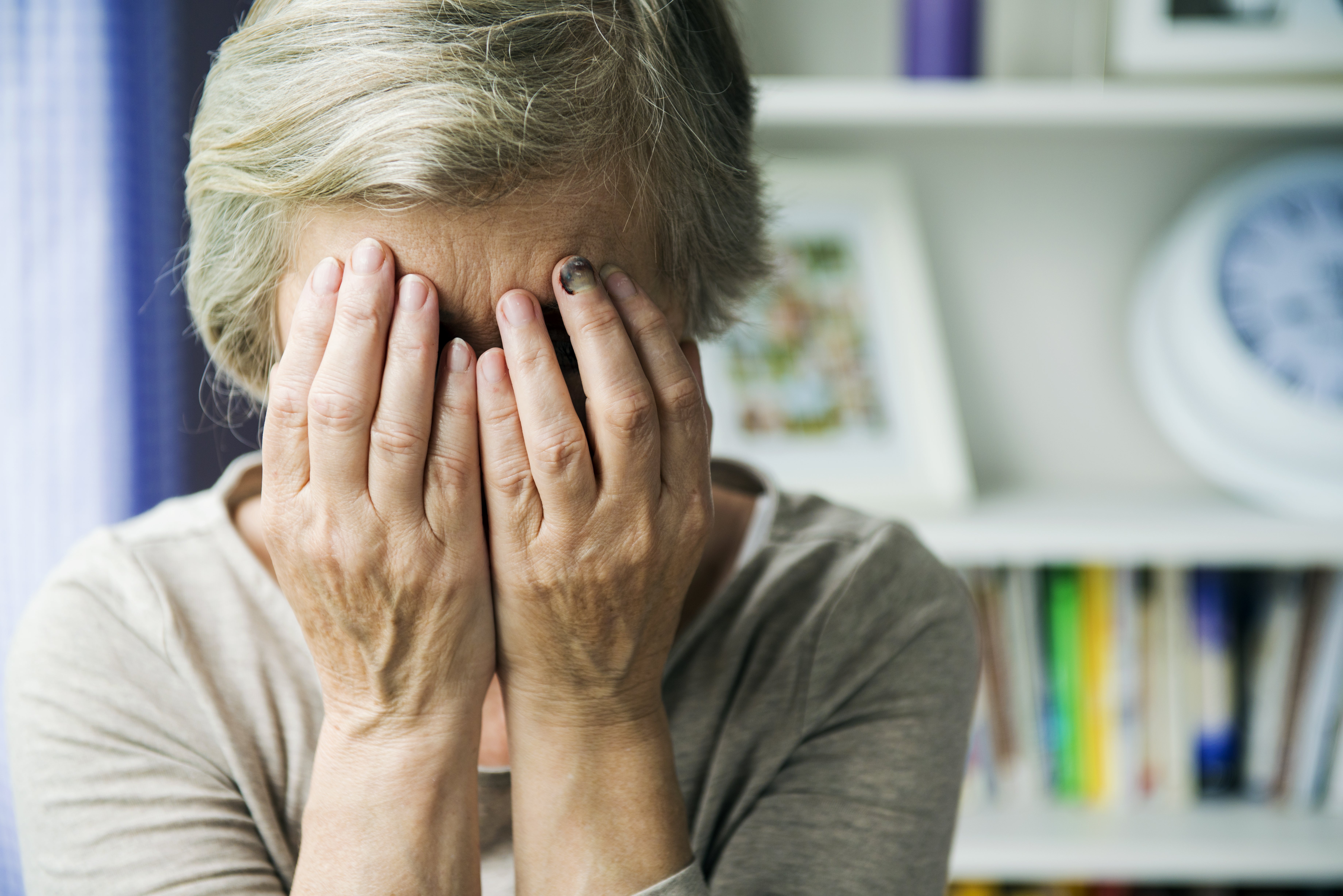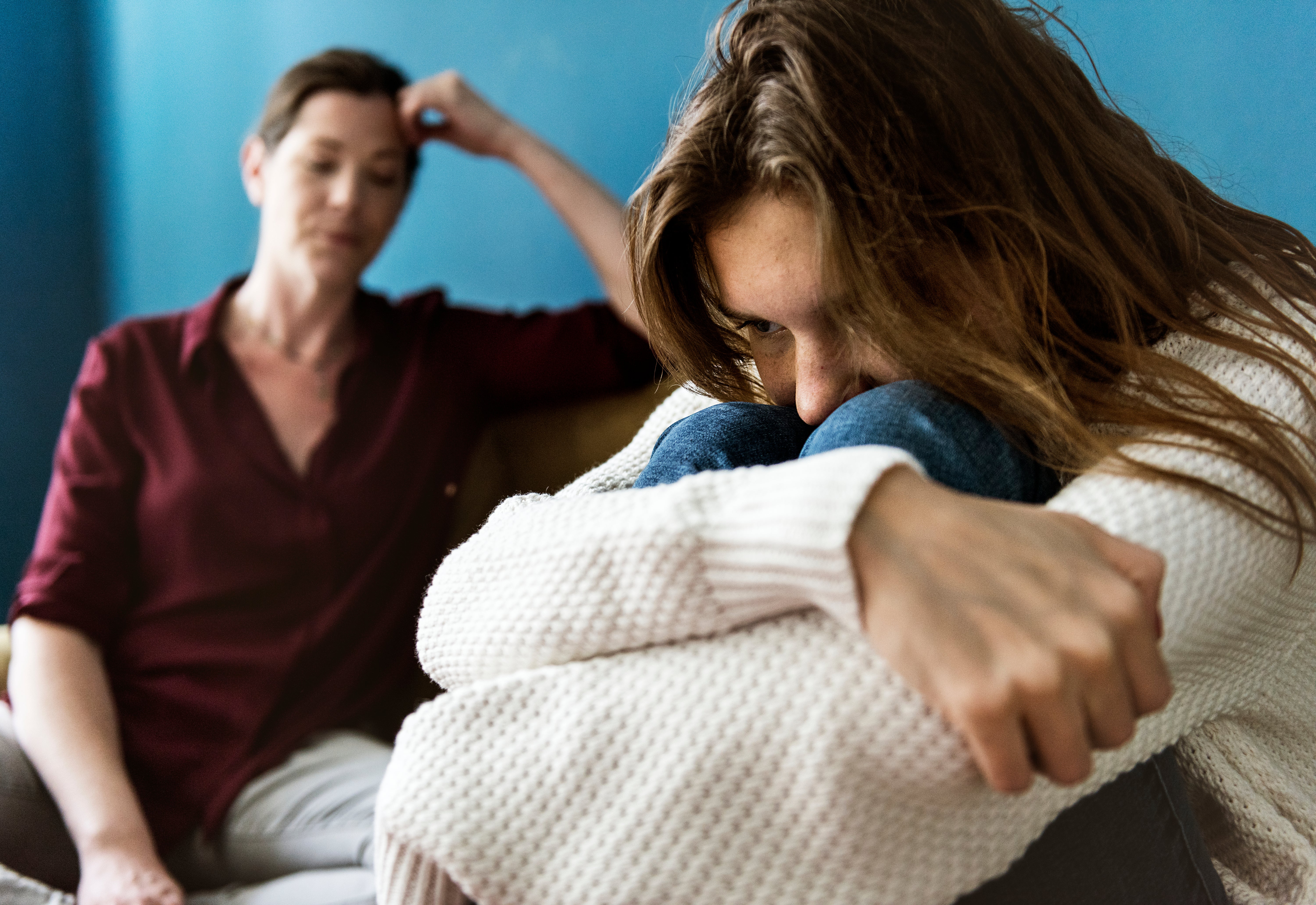Abused by our grown-up children
The phenomenon of adult children abusing their parents is a complex one, and help can be hard to come by for those who find themselves in its grip, writes Thien Trang Nguyen Phan

Broken arms ... I had a badly damaged jaw ... strangled ... ”
Lizzy* picked me up at her local railway station and drove me to the lounge of her favourite hotel, where for more than four hours we sat in a discreet corner while she told me her story. Andy, the person responsible for her broken arms and badly damaged jaw, was her 28-year-old son.
When we met in 2018, Andy had recently been given a suspended sentence after pleading guilty to serious assault. He had returned to live with Lizzy following his conviction and “nothing had changed”. The abuse carried on. But despite this, Lizzy, now in her late 60s, refused to give up on him.
“I’m not giving up. And it’s not just because of Andy, it’s actually because I feel I’ve been let down. I really, really do,” she told me.
Lizzy was the first interview participant in my doctoral research project, which started in September 2018. It was the first study of its kind in England and Wales to specifically investigate the abuse of parents – particularly mothers – by adult children. This is known as filial abuse.
I was interested in how mothers articulated their experiences of such abuse in its various forms and manifestations. I wanted to understand each of their journeys, how they had sought help, and what barriers they had faced in doing so.
Since my research started, there have been some high-profile cases in the media, drawing attention to the problem in its most extreme form: adult children (often sons) killing their parents (often mothers). This was the case in Plymouth in August 2021, when Jake Davison shot and killed his mother and four other people before going on to take his own life. Had Davison not gone on to kill more people, his mother’s death would probably not have attracted the attention it did.

Away from these terrible headlines, the problem itself remains hidden and little understood, with scant data to help us figure out just how prevalent it is.
Crisis intervention
I began my career in London as an independent domestic violence adviser in 2009. I supported victims of domestic abuse who were deemed to be at “high risk” of harm. Mary was one of the few people I talked to who had experienced abuse from their adult children – and was one of my longest-running “cases” (I always disliked that word).
I kept her file open for as long as I was able to, at times against advice from my managers. The service I worked for focused on crisis intervention and risk reduction, aiming not to keep cases open for longer than six months unless there were ongoing criminal proceedings.
One of my most vivid memories of Mary was when she turned up at my office unannounced one day. Her son, who was in his early 20s, had taken all her money and left her with no food. Mary was struggling with a chronic illness. My colleagues and I raided our office fridge and gave her some fruit and yogurt. I helped her apply for a crisis loan and accompanied her to the appointment.
I wanted to keep Mary’s file open because I felt that crisis intervention and risk reduction did not work in the same way for Mary, and for other mothers like her. The relationship she had with her son, alongside her sense of maternal responsibility, made it much harder for Mary to take action against him. She needed time, but time was what a service like that did not have.
And yet, while they were at the receiving end of these appalling acts of aggression, Clara and other mothers continued to be called on to care for their children
I became increasingly uneasy about the lack of research into the abuse of parents by their adult children. Most of what we know about the prevalence of domestic abuse in England and Wales is based on what we have learned about intimate partner violence and abuse. In fact, when the term “domestic violence” first emerged in the US and the UK, it described violence and abuse in intimate relationships.
Under the influence of second-wave feminist activists, who helped make domestic violence a social issue, it ceased to be a private problem. Before this, intimate partner violence had remained, as its name suggested, private and “domestic” – a problem to be managed within the home.
The domestic abuse refuge movement was instrumental in spearheading change. Over time, different multi-agency structures and risk-assessment tools have been developed in England and Wales to respond more effectively to domestic abuse. Yet they all had their origins in an understanding of domestic abuse as something that is committed against a woman by their male partner.
And while, recently, more attention has been given to the problem of abuse against parents carried out by children – especially during lockdown – this focus has been on adolescents and younger children. As a result, the experiences of parents of adult children have remained largely unexplored. That is why I decided to research the problem myself.
‘Everyday misery’
I spoke to 11 mothers living in different parts of England. All of them had self-identified as having experienced, or were still experiencing, some form of abusive behaviour from their now adult children.
As I listened to the mothers who took part in the research, the stories they told carried familiar echoes of Mary’s experience. The ongoing caring burden was inseparable from their children’s abusive behaviour, which had often started in late childhood or early adolescence.

For instance, Mercy, who was in her 50s, said that her teenage son Tom had “always been difficult”, and that “from the womb he ... has been problematic”. She described her life with him as “a catalogue of everyday misery”, filled with what she considered to be low-level acts of aggression. Indeed, Mercy explained that Tom “operates at a level where it’s very much under a line that you call the police”.
She said: “He’ll be expecting me to drive him to work whilst calling me a stupid f***ing c*** and shouting and threatening, and he has hit me whilst I’ve been driving before on the motorway.”
Mercy described how Tom would repeatedly attack her by throwing food at her or throwing orange juice in her face. The acts of aggression she described were far from low-level. As we sat discussing this, Mercy bleakly anticipated her future with some dark humour, saying, “Well, got elder abuse to look forward to, you know! I mean, I’m confidently expecting that one.”
She had to consider her son dead. She had to resign herself to the fact that she could not see him again, at least not for the foreseeable future
Mercy’s stark statement highlighted a crucial fact: although my research project had set out to focus on “adult children”, for most mothers the lines separating the child, the adolescent and the adult were blurred – as were the lines separating their care-giving and their suffering.
Indeed, quite often these mothers’ stories were filled with an overwhelming sense of weary endlessness. The story told to me by Clara, 53, was one such example. Our talk was marked by halting speech, long stretches of silence, and conversational dead ends. Clara herself often remarked that she could not remember specific details, and that “it all melts into one”.
Her daughter, Frida, who was in her 20s, was regularly verbally abusive and physically aggressive. At times this played out as “terrible meltdowns” and wanton destruction of the home. Clara said she would be “breaking stuff, slamming doors, pulling doors off hinges ... just smashing mirrors, anything, anything at all ... I’ve sort of given up, because she smashes and breaks everything”.
And yet, while they were on the receiving end of these appalling acts of aggression, Clara and other mothers continued to be called on to care for their children, because of their financial dependency, mental health difficulties, or substance use issues. I was reminded of Mary’s experience of providing ongoing financial support to her son, who abused her kindness by stealing from her and even starving her.

‘Stuck in that impossible place’
These accounts of “everyday misery”, exacerbated by the maternal caring burden, were suffused with a strong sense of impasse.
Kate, 48, fled from her violent partner to a refuge with her children. Her daughter, Ivy, had “always been ... quite unpleasant and aggressive to her sister ... in a kid’s way”, but became “unmanageable and overtly aggressive” just before she became a teenager.
So began a “nightmare” that would last for more than a decade. When we met for the interview, Ivy had recently left home following an incident in which she had attacked Kate in the presence of terrified elderly relatives, and the police had been called.
For Kate, living with Ivy’s abusive behaviour since her daughter’s early adolescence meant that she had experienced abuse “all her adult life”. Yet there was a clear difference between the type of abuse she had suffered from her daughter and that she had experienced at the hands of her ex-partner: “I drew a line under it with him. I walked away and I moved on. But she’s my child, so what do I do?”
Kate powerfully articulated this untenable impasse and the never-ending, inconclusive nature of her experience when she said: “She’s my child.” Like Lizzy, Kate had been let down by a system that offered no viable support and left her to carry the burden alone.
‘I’ve got to think that he’s dead’
Separation from their children was a last resort for these mothers, a point of no return when all else had failed. Kate felt she had no other choice but to ask Ivy to leave because of the risk she posed to her elderly and vulnerable relatives.
When we met for the interview, Ivy was only in contact with Kate’s other child, and Kate tried not to be drawn back into having contact with Ivy, although she was unsure for how long she could keep up her resolve. Since our interview, I have often wondered how Kate’s situation might have changed.
When a point of no return is reached, some mothers are left with a powerful sense of bereavement and loss. This was the case with a woman I met whom I’ll call Joan. Following an incident during which she was seriously assaulted by her 39-year-old son, Michael, Joan made a statement to the police and obtained a non-molestation order against him.

When we met for the interview, Joan had been estranged from Michael for two years. Joan, now in her late 60s, told me that when she had last seen him by chance in the street a year later, she was “literally shaking” and “absolutely terrified”. She was barely able to contain her emotions as she described her coping process:
“I can’t go into his bedroom. I can’t ... it’s just too much for me. At the moment I’ve got to think that he’s ... dead rather than he’s alive. I know that he’s alive, but there’s nothing I can do about it. I said to my [youngest] just before Christmas ... I have to think, Michael’s not with me any more ... like Michael’s dead ... so that I won’t start worrying about him. It’s an awful thing to say ... but it’s the only way I can do it, you know, to survive.”
Joan expressed how the ambiguity of her loss had complicated her mourning. She avoided going into Michael’s room, like a mother keeping the room of her deceased child intact – except that Michael was, of course, still alive.
Although Kate’s story revolves around her daughter’s abusive behaviour towards her, this abuse did not take place in a vacuum but within a wider context of male violence against women and children
I remember feeling an intense sadness listening to Joan. Objectively, she was one of the few “success” stories: she had called the police, gone to court, obtained an order preventing her son from contacting her or coming back to the home. She was now safe, and had not heard from him. She was doing nice things for herself, at last.
But her success had come at a tremendous cost. She had to consider her son dead. She had to resign herself to the fact that she could not see him again, at least for the foreseeable future, and that by thinking of him as dead rather than alive she could stop worrying about him as his mother. It was the only way for her to survive.
“I know it sounds awful to say that he’s dead but he can’t come near me because ... I’m too scared of him ... absolutely terrified of him. I think if it was another person, I wouldn’t be as frightened.”
Joan was my eighth interview participant. If Lizzy had helped trigger a key lightbulb moment of my research, with her image of the mother-fighter who would never give up, Joan triggered another one. Like a puzzle coming together, the final picture that emerged was one of permanent loss, of a no-win situation: either the mother gets on with her “everyday misery” or she cuts the cord – that unique, physical, visceral bond between mother and child.
Root causes
All these stories stressed the importance of long-term support. This was perhaps best expressed by Alexandra, 52, whose teenage daughters Nina and Layla were both violent and abusive. She spoke with real affection of her domestic abuse support worker, who had recently left her post. This worker had had a similar role to mine when I first met Mary.

A decade on from my time as a domestic violence adviser, I found key similarities in the limitations of our service model. Alexandra’s worker kept her file open for as long as possible, supporting her client with a myriad of issues beyond domestic abuse. This was, however, highly unusual, and is even more so in the current climate of resource constraints. Alexandra understood that her new worker could only help her with “serious things”. Yet it was in her everyday misery that Alexandra experienced crisis. The lines separating crisis intervention and long-term support for mothers experiencing filial abuse cannot be neatly defined.
Long-term support means something else, too – something even more wide-ranging and fundamental. Kate described her abusive partner’s actions and their effect on her life and the lives of her children:
“I never prosecuted him, I’ve never asked for anything, I never wanted anything; what I wanted was a fresh start – for us to be safe. But I paid for therapy for my daughter – I paid for five years. We’ve done all this stuff, he’s done nothing: he just walked away, just threw a grenade into the life of all these people and walked away.”
To make matters worse, Kate often felt dismissed as a “silly middle-aged woman” by health professionals from whom she sought help repeatedly in relation to Ivy. Once, when she tried calling children’s social care for advice, she was told by the person on the phone: “You’re a mother. Do your job.”
Kate spoke passionately about the need for “society to deal with the root cause”. Indeed, the collective story of all these mothers is filled with echoes of male violence against women, along with other manifestations of male privilege, such as gender inequalities and institutionalised sexism and misogyny.
In other words, although Kate’s story revolves around her daughter’s abusive behaviour towards her, this abuse did not take place in a vacuum but within a wider context of male violence against women and children. The mother’s burden is exacerbated by gendered expectations around caring and parenting, and by a systemic response which treats them as a default safety net for their children.
Until this wider context is fully acknowledged, the response to the abuse will remain disconnected from its root cause, and the abuse itself will continue to be hidden and poorly understood.
*All names have been changed to protect the anonymity of the participants.
Thien Trang Nguyen Phan is a PhD candidate at the Policing Institute, Anglia Ruskin University. This article first appeared on The Conversation




Join our commenting forum
Join thought-provoking conversations, follow other Independent readers and see their replies
Comments